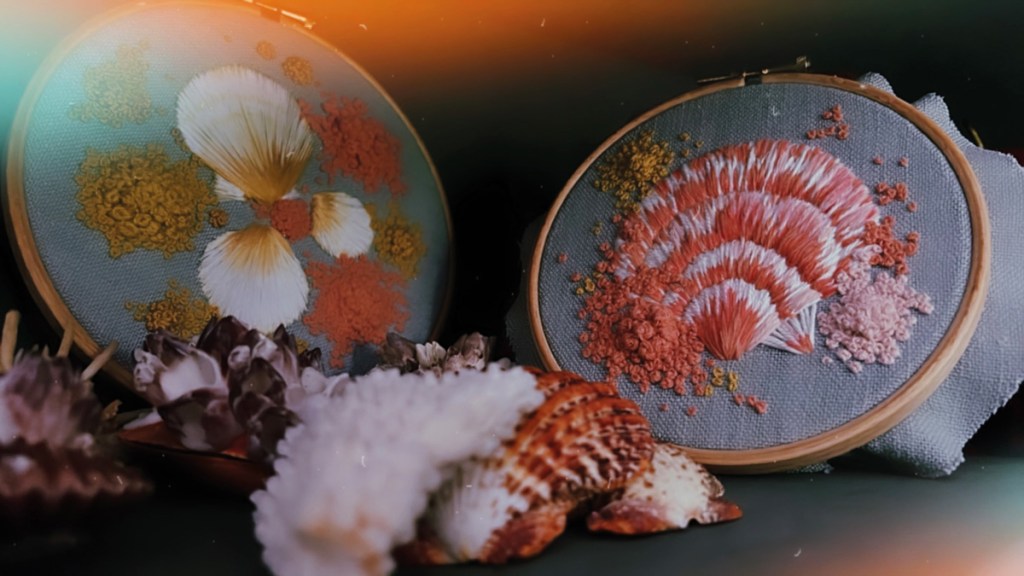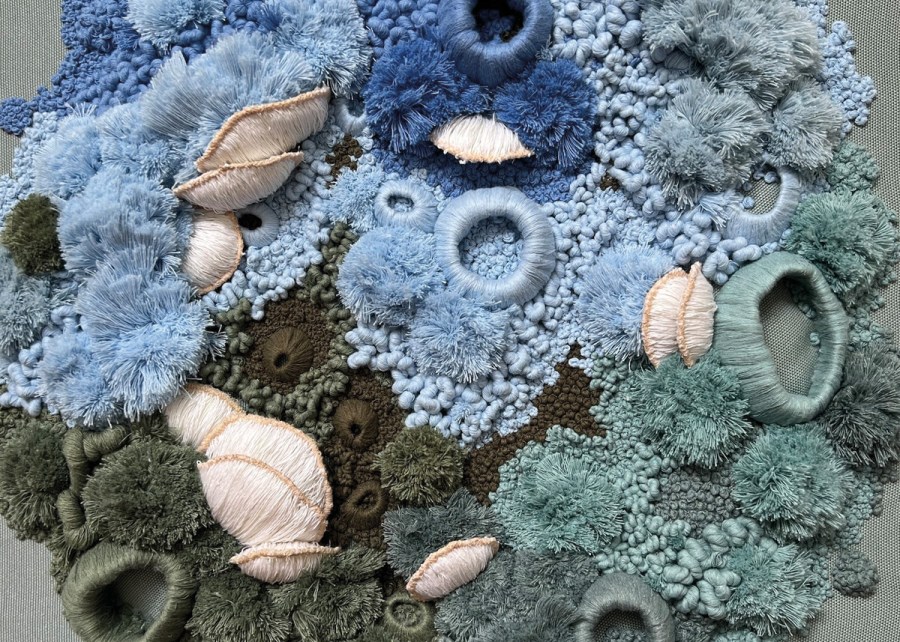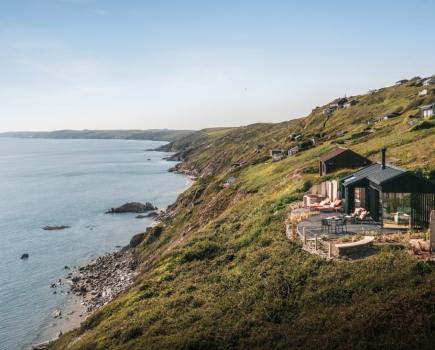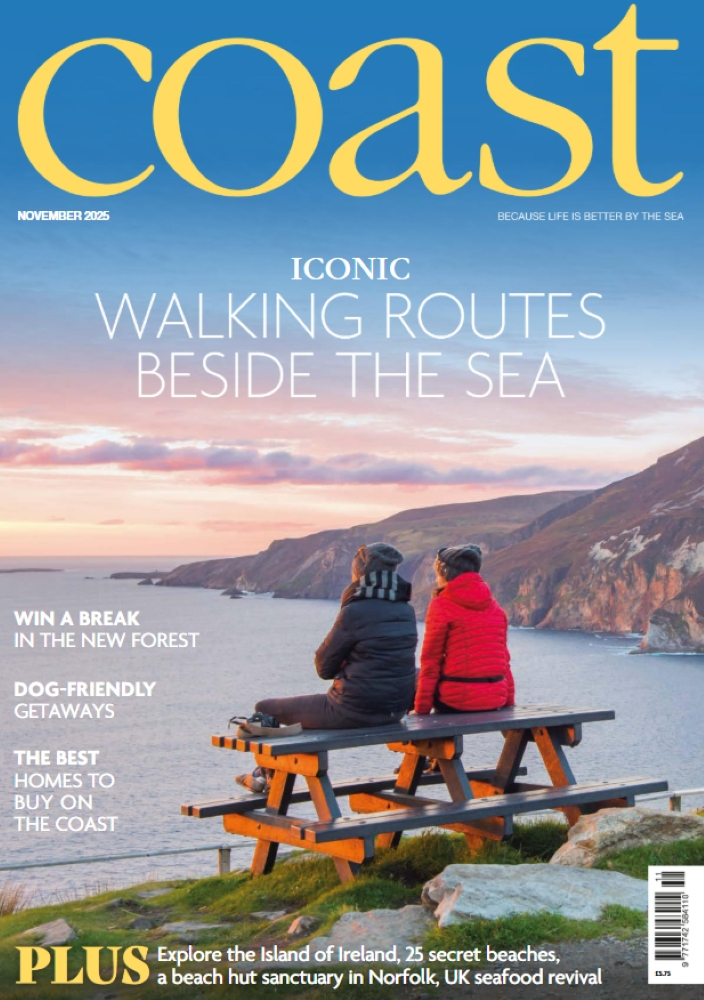Helen Wilde, the embroidery artist behind Ovo Bloom, shares how growing up on the Yorkshire coast and an enduring obsession with the sea have shaped her richly layered, globally celebrated art.
Interview Susie Atkinson | Photography Annie Greatorex and Emily Sky
My earliest memories are filled with salt spray and fossil hunting. I grew up in North Yorkshire, on the edge of the moors and close to the rugged coastlines of Filey, Robin Hood’s Bay and Scarborough. My dad is a devoted beachcomber, with a fossil collection so enormous my mum jokes the Yorkshire coastline will grow by nine miles when he finally leaves us, because she’ll be taking them all back!
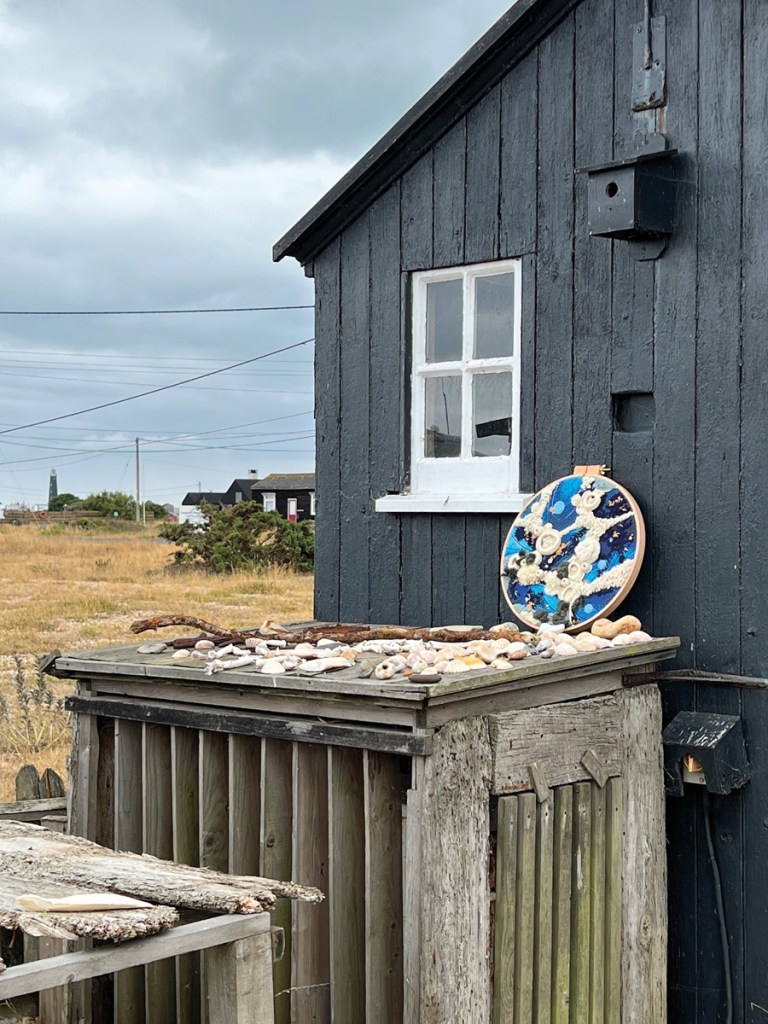
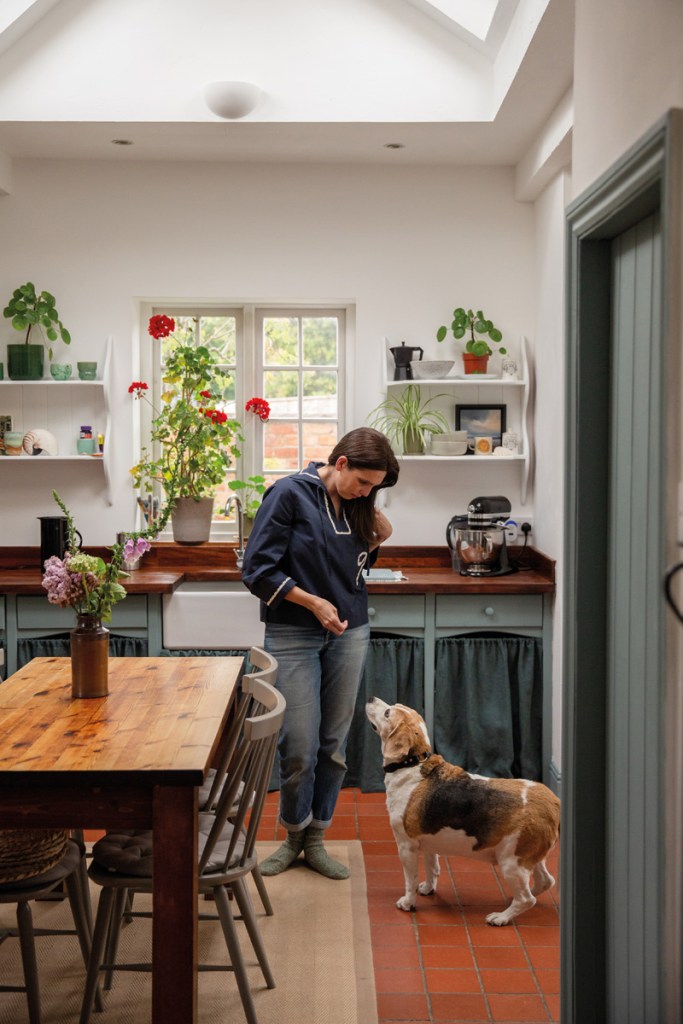

The sea has always been in my blood. My childhood summers were spent shell collecting, staring into rock pools for hours and building sandcastles – it was always part of what we did as a family. My dad inherited his love of the coast from his grandmother and it’s a passion that’s trickled down to me.
Our home was always full of seaside treasures – shells, seaweed, smoothed glass – and even now, my house is a shrine to the coast. There are corals and ceramics on the window ledges, painted seascapes on the walls and drawers overflowing with sea-toned threads.
SLOW CRAFT
I was always going to be an artist. As an only child, I turned to animals and nature as my friends and my creativity grew from that quiet companionship. I went on to study Decorative Arts in Nottingham – the only course at the time that focused on traditional crafts. We explored everything from ceramics and glass to textiles and papermaking.


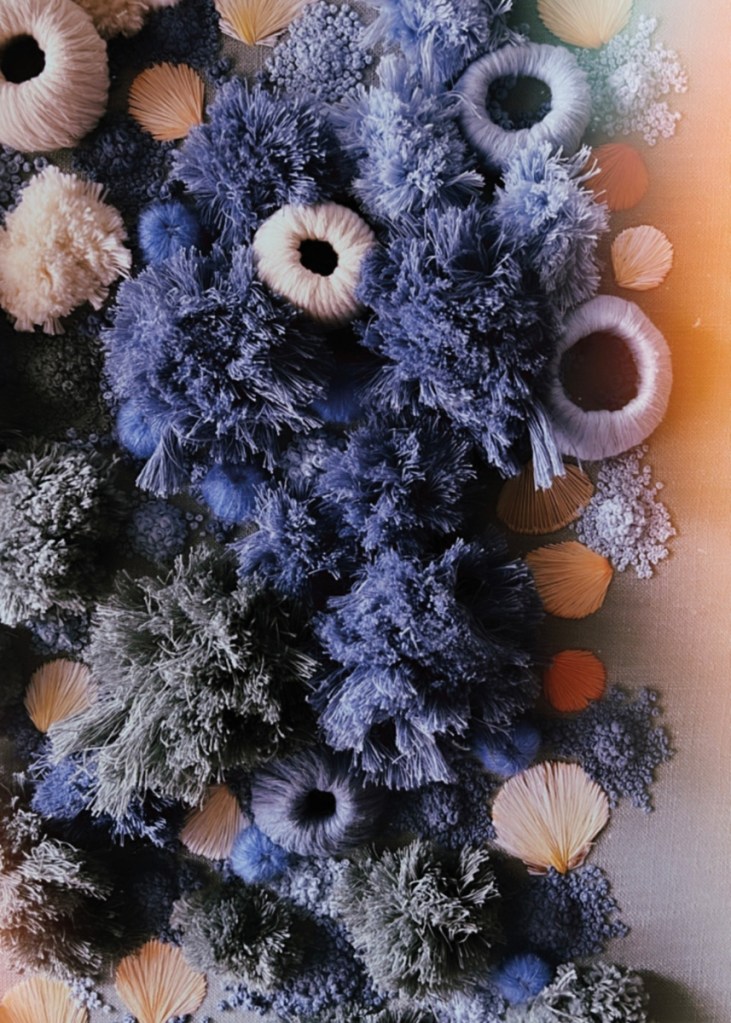
I gravitated towards stitching, no doubt inspired by my parents. My mum was a designer for Paddington Bear, hand-finishing his duffle coats. My dad was a master saddler crafting Shire horse collars and racing saddles by hand. The importance of slow craft, of things made well and made to last, was instilled in me early. I was lucky enough to be mentored by Tom Phillips, the Royal Academy artist, then Vivienne Westwood and I ended up working in the fashion industry in New York and Paris.
Then, in my late twenties, everything changed. I was diagnosed with stage three ovarian cancer at age 29. That brush with mortality was the moment I stopped messing about. I knew I had to figure out what I really wanted to say through my work.
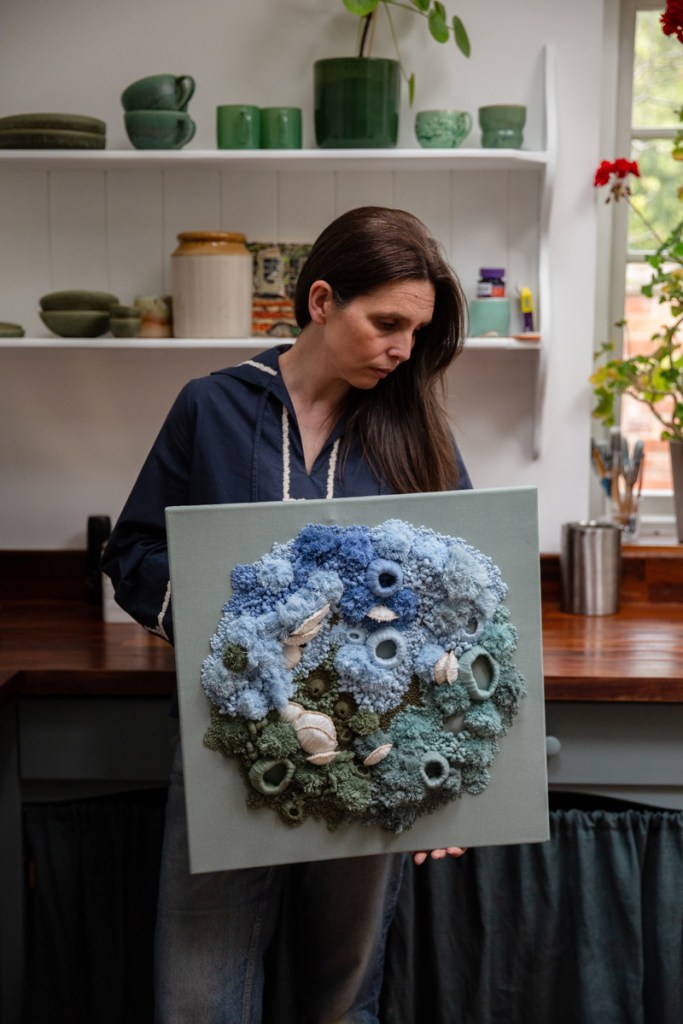

During my recovery, my mother-in-law gave me a giant 1970s display cabinet full of embroidery threads. I was too unwell to go out, so I sat in bed playing with thread, paper, fabric and an old obsession with succulents. I made a crepe-paper plant, stitched it onto fabric and shared it on my dog’s Instagram account.
A stranger messaged: “Is this for sale?” And just like that, Ovo Bloom was born. That one post snowballed into a Folksy shop, then an Etsy shop, then a feature in Stylist magazine. The New York Times listed me as a top 10 Etsy artist. Suddenly I had collectors in America, commissions coming in and a real sense of momentum.

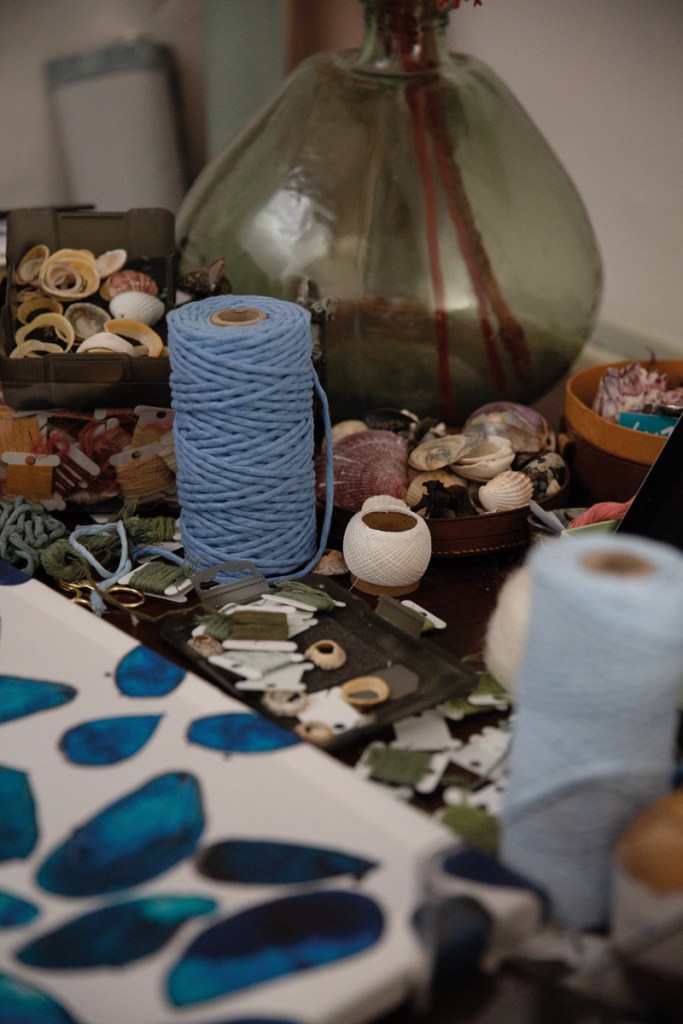
A DEEP COASTAL CONNECTION
Fifteen years on, I’m still inspired every day by the sea. The dining room wall is a seascape. I’m obsessed. Even holidays revolve around the coast. Dorset is a favourite – we go to Lulworth Cove, Durdle Door. One of our dogs used to dive into rock pools and fetch me shells.
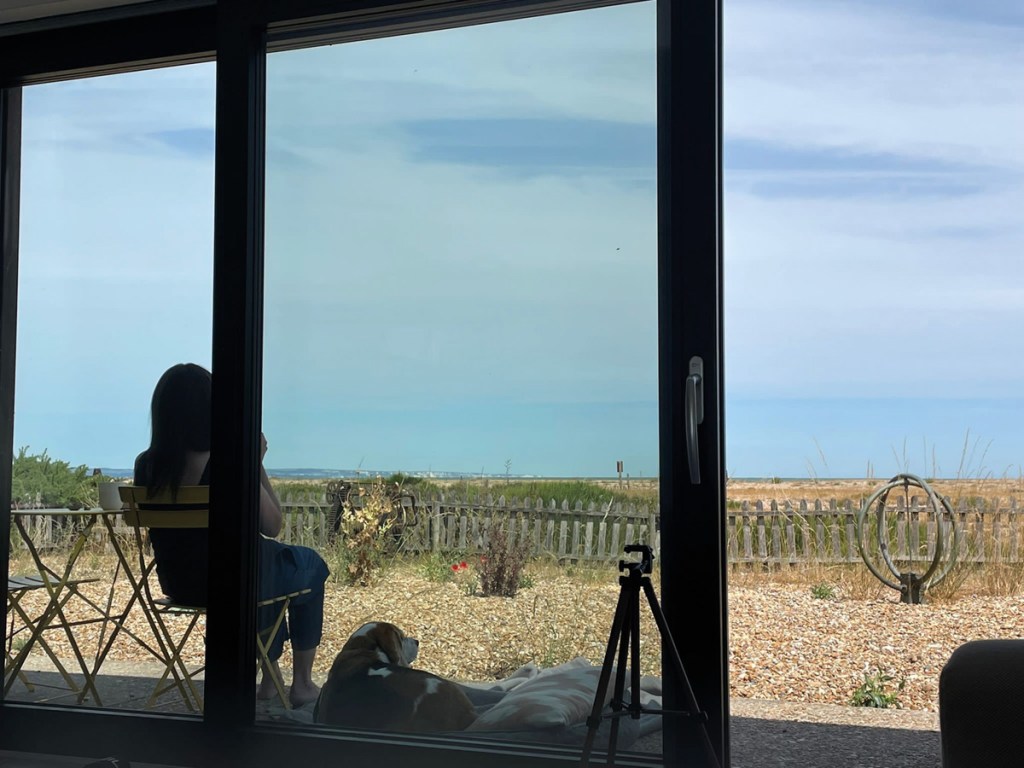
Every piece I make is infused with that deep coastal connection. I see threads as paint and stitches as brushstrokes. The textures, the layers – it’s about capturing that feeling of being on the shore, between land and sea.I’ve always gravitated towards blues and greens, to the shifting light of the ocean. I don’t see shapes – I see colour. Colour is how I remember places and how I build my work. I’ll dye my own threads using natural dyes like indigo. I even grew and harvested my own indigo plants once (note to self: always wear gloves). I painted mussel shells, photographed them, printed them onto fabric, then embroidered over them to create layered, textured coastal pieces. I don’t even see forms when I look at the coast. I see colours. I go home, match them to my threads and begin.
I work in a whirlwind. If I’m not creating, I’m planning. I stitch while the puppy naps (she rarely does), or in the stolen hours between breakfast and bed. I don’t really switch off. If I’m low or burnt out, I return to the coast. There’s something healing about sea air, about walking the coastline looking for fragments.
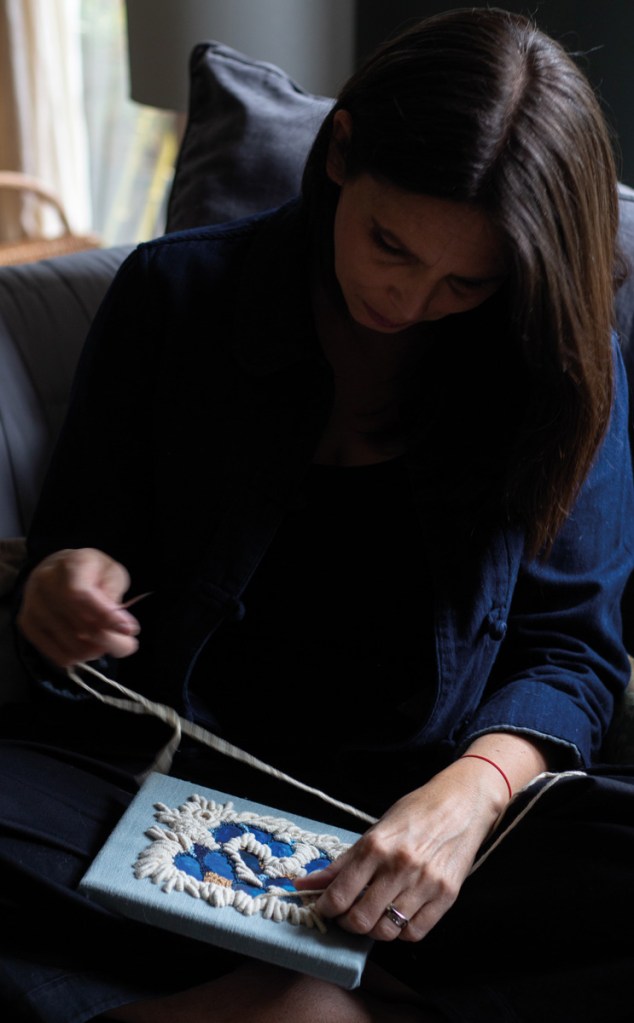
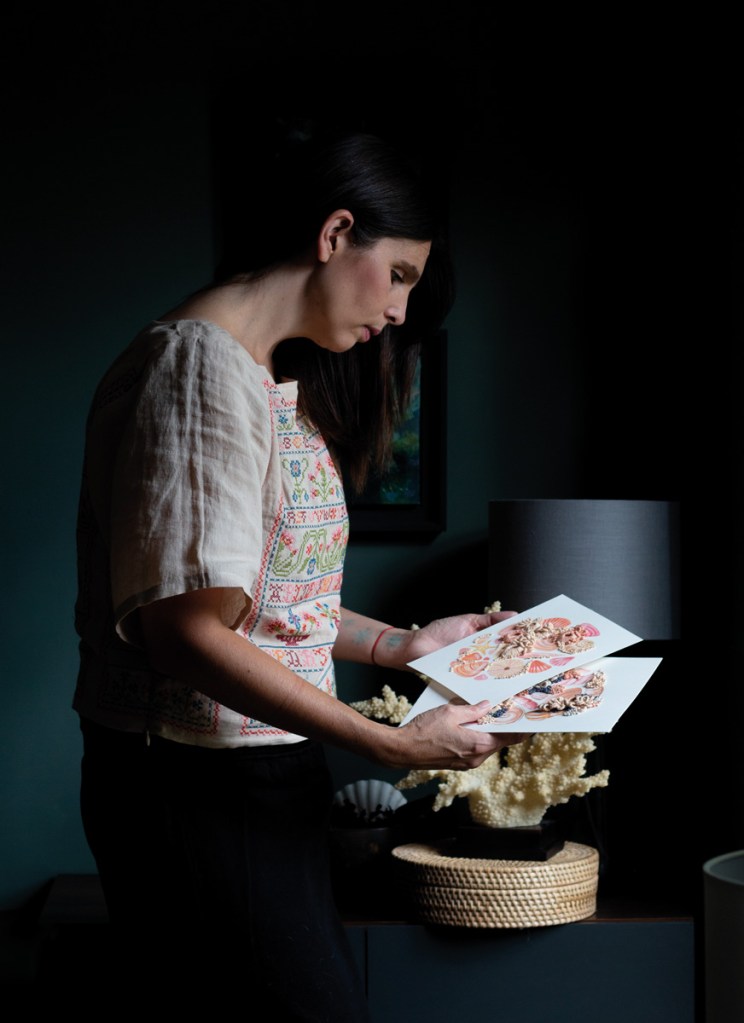
INTERNATIONAL RECOGNITION
I’m incredibly proud of where my work has ended up. Some of my pieces now hang in The Dorchester, in rooms where guests wake up to ocean-inspired embroidery on their walls. And then there’s the work that’s been snapped up by big American celebrities that I can’t talk about because I’ve signed Non-Disclosure Agreements – how exciting!
I’ve shown work in galleries across the UK and America, including a regular show at the wonderful Nahcotta Gallery in New Hampshire. Textile art is often dismissed in the UK, but in the States, it’s seen as what it truly is: art.
My work is always evolving. One year I’m obsessed with coral forms, the next with terrariums, or driftwood, or tidal lines. But whether I’m looking at Dorset’s chalk cliffs or the haunting shores of Dungeness, I’m always cataloguing colour, texture, memory. The sea is a constant and the coast is stitched into every part of my life.
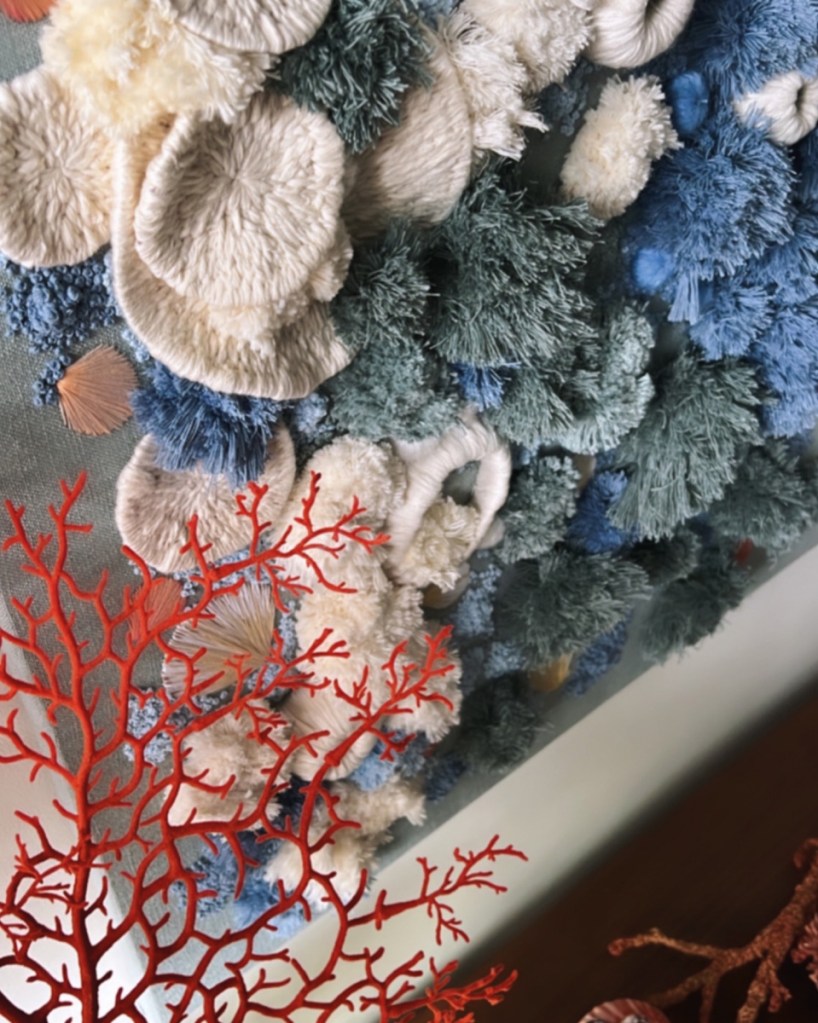

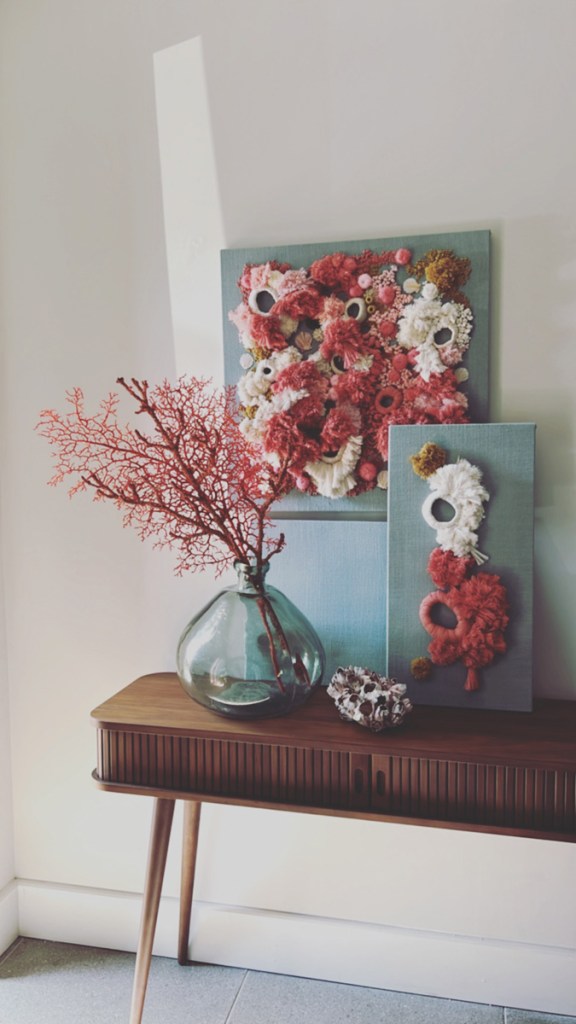
Helen Wilde’s art is available at ovobloom.com, prices from around £25, and also at The Waterside Gallery in St Mawes, Cornwall and Bryher Gallery in the Isles of Scilly. For updates about Helen and her work, follow her on Instagram @ovobloom.
